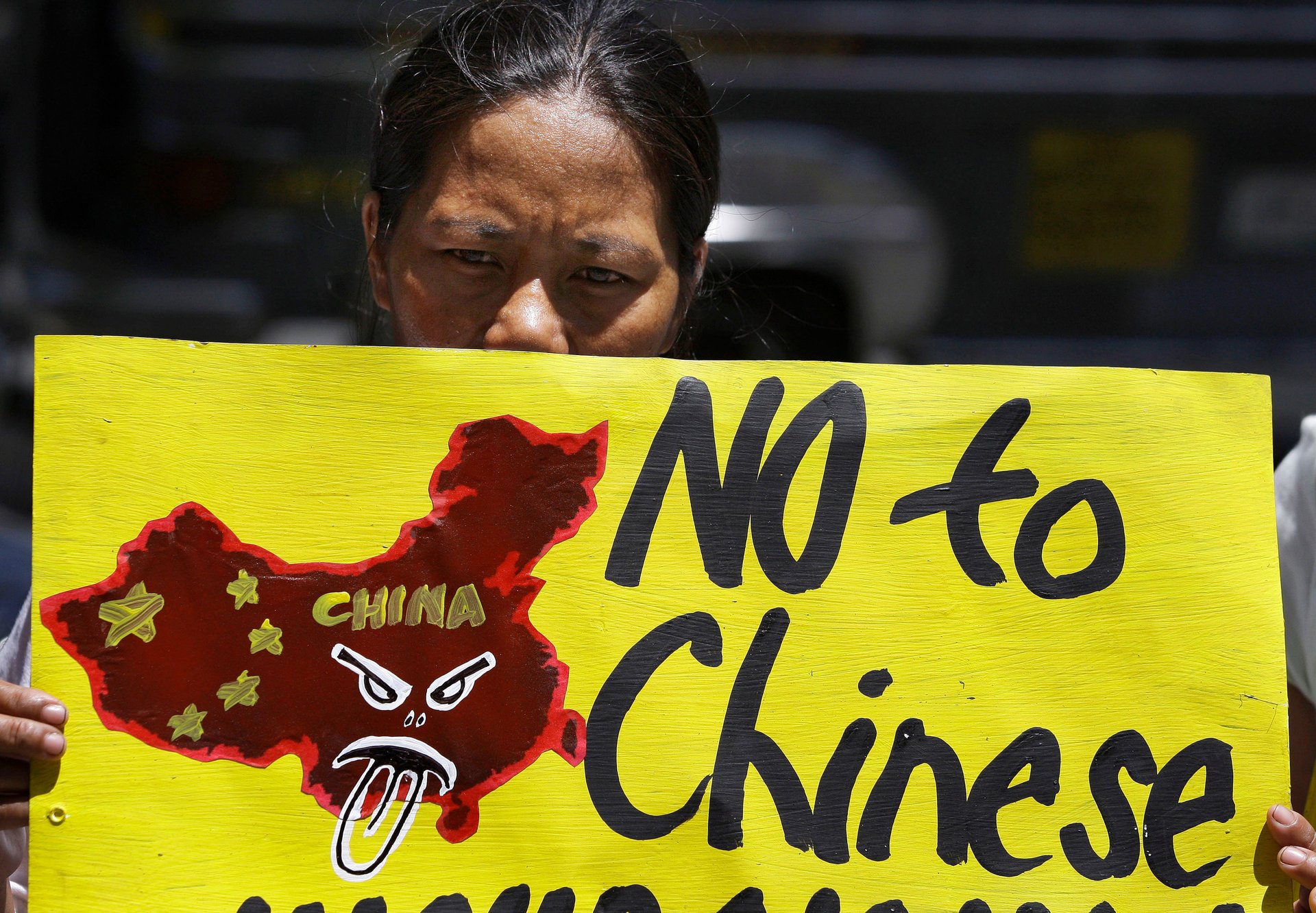After boosting defense budgets, China’s southern neighbors show signs of defiance
China is bullying its neighbors over territorial claims in the South China Sea, home to crucial shipping routes and oil and gas reserves. Last week, China announced that it would board and intercept ships that enter what it considers Chinese territory. And on Tuesday, Vietnam accused China of cutting a seismic cable attached to a Vietnamese ship near the Gulf of Tonkin. This is all after China cheekily issued new passports with maps claiming a chunk of the South China Sea that belongs, according to the UN, to the Philippines, Brunei, Malaysia, Indonesia and Vietnam.

China is bullying its neighbors over territorial claims in the South China Sea, home to crucial shipping routes and oil and gas reserves. Last week, China announced that it would board and intercept ships that enter what it considers Chinese territory. And on Tuesday, Vietnam accused China of cutting a seismic cable attached to a Vietnamese ship near the Gulf of Tonkin. This is all after China cheekily issued new passports with maps claiming a chunk of the South China Sea that belongs, according to the UN, to the Philippines, Brunei, Malaysia, Indonesia and Vietnam.
Yet China’s assertiveness hasn’t been meet with deference from its southern neighbors. Vietnam said that it would launch more marine patrols, and India said it would consider sending navy ships into the area. The Philippine’s foreign ministry called Chinese interception of ships a “gross violation” of international agreements and a “direct threat to the international community.” In response to the new Chinese passports, Vietnam and the Philippines said they would refuse to stamp Chinese passports; India issued visas for Chinese nationals with New Delhi’s version of the Sino-Indian border that was the subject of a border war in 1962.
For years, China has courted the countries of Southeast Asia in hopes of dispelling fears of Chinese expansion. The region is often cited as an example of Chinese diplomacy, a “charm offensive” that China hopes to employ across the world. Chinese language and culture “Confucius Centers” were set up all over the region, Jackie Chan was sent to perform, and China became a major foreign aid supplier while also signing a bilateral trade agreement with the entire region. By promoting the idea of a “peacefully rising” China (later changed to peaceful “development” because even “rise” was thought too aggressive), China hoped to ensure a peaceful region for it to grow.
But after decades of clashing over the South China Sea, countries in the region have remained wary of the Chinese military’s intentions. China announced on Nov. 26 that it landed a jet on its first aircraft carrier, something foreign observers said China was still years away from achieving. After two decades of double-digit growth of its defense budget, China has a vast arsenal of ballistic and cruise missiles. Its air and sea power is more than enough to project into South East Asia.
As a result, several are seeking new allies and increasing their defense budgets. Myanmar launched political reforms to seek Western acceptance, in large part to end its reliance on China. Together, the region of Southeast Asia increased spending on defense by 13.5% last year, to $24.5 billion, according to IHS Jane’s. Indonesia upped its defense spending by 84%. Arms deliveries to Malaysia jumped eightfold between 2005 and 2009, compared to the five years prior, and Singapore is now the world’s fifth-largest arms importer, according to the Stockholm International Peace Research Institute.
Another reason for the return volley could be that Southeast Asia is its own economic growth story. Countries like Indonesia and Myanmar have become known as the next frontier of emerging markets, and eventually they may rely on China less. ASEAN is a major trade bloc that lends individual nations more international clout than they would have independently; ASEAN is courted by the US, the EU, and Japan for trade deals. Rising domestic consumption in countries like Indonesia and Malaysia (PDF, p. 7) has already helped counteract a slowdown in demand from China.
“The difference is that…the economic importance of all of Asia Pacific makes the potential for conflict that much more potentially destructive. That raises the stakes of these tensions,” says Abe Denmark, senior director at the National Bureau of Asian Research. Could that lower the chances of armed conflict in the region? Not necessarily. “It increases the cost, but it also increases the need for countries to assert their claims,” he says.